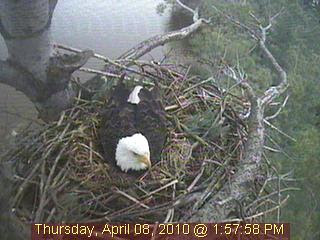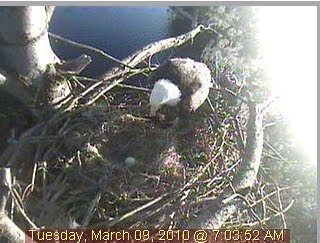 Well, as you can see from this image, the eagles have left the nest! Following about a week of exploring nearby branches around the edge of the nest the eagles have taken their first flight. They will remain in the area of the nest during the weeks to come as they develop the ability to fly. The adults will also continue to feed them and they will likely frequent the nest for perching and feeding.
Well, as you can see from this image, the eagles have left the nest! Following about a week of exploring nearby branches around the edge of the nest the eagles have taken their first flight. They will remain in the area of the nest during the weeks to come as they develop the ability to fly. The adults will also continue to feed them and they will likely frequent the nest for perching and feeding. Unfortunately, we have lost the internet connection on site but we anticapate solving the problem in a few days. In the meantime, you might check in on our ospreycam where ospreys are growing fast and on our looncam where you can hear the sounds of Maine's wildlife live.
Also, because we recieve many questions about where eagles go after departing the nest I would like to direct you to our wildlife tracking page where we have outfitted several eagles with sattelite transmitters that document the movements of birds. This is an ongoing project and we anticipate having two more birds come online later this summer.
Until next time,
Patrick Keenan
BioDiversity Research Institute










